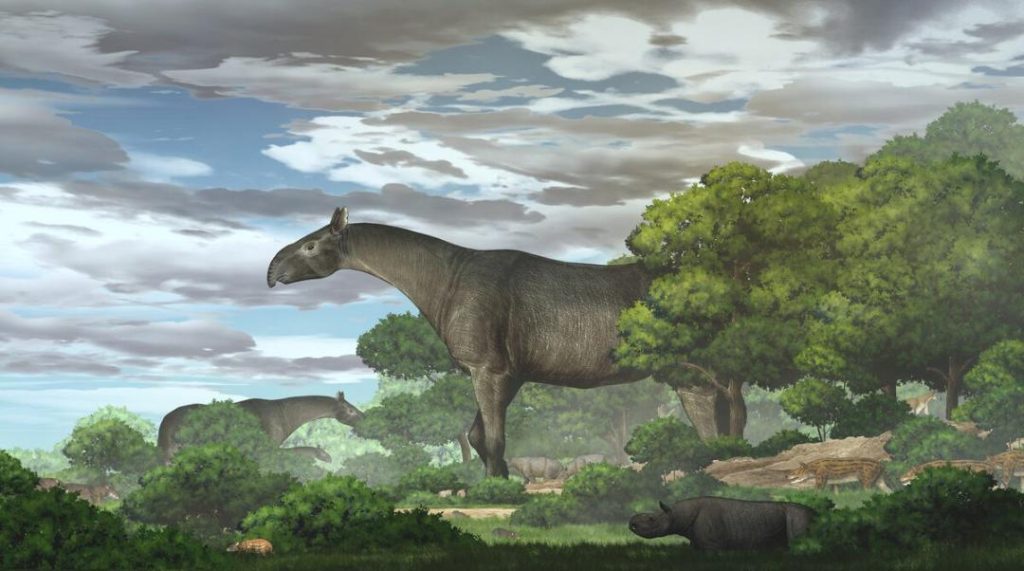
Scientists Find Ancient Proteins in Fossils up to 24 Million Years Old
For decades, scientists have been working to unlock the secrets of ancient life forms, and recent breakthroughs have made it possible to do just that. In a groundbreaking discovery, researchers have successfully extracted and sequenced proteins from fossils of extinct animals, including a tooth of a rhinoceros that dates back an astonishing 21-24 million years.
This remarkable achievement has significant implications for the field of paleontology and our understanding of the evolution of life on Earth. By analyzing these ancient proteins, scientists can gain valuable insights into the biology and behavior of extinct species, as well as the conditions in which they lived.
The discovery was made by separate research teams in Canada and Kenya, who used cutting-edge technology to extract and sequence the proteins from fossilized remains. According to the lead biologist on the project, “Together, these complementary projects demonstrate that proteins can be found in ancient fossils the world over.”
The team in Canada focused on extracting proteins from dental fossils of extinct rhinoceroses, elephants, and hippopotamuses. They used a combination of techniques, including mass spectrometry and chromatography, to identify and sequence the proteins. The team was able to recover fragments of collagen, a protein found in connective tissue, from the fossils.
The team in Kenya, on the other hand, concentrated on analyzing protein fragments found in fossils from the Lake Turkana region. This region is known for its rich fossil deposits, which have yielded many important discoveries in the field of paleontology.
One of the most significant aspects of this discovery is the age of the fossils. The rhinoceros tooth, which dates back 21-24 million years, is one of the oldest known fossils to contain proteins. This is a remarkable achievement, as proteins are notoriously fragile molecules that are prone to degradation over time.
So, how were the researchers able to extract and sequence these ancient proteins? According to Dr. Maria Rodriguez, a leading expert in the field of ancient DNA, “The key to successful protein extraction is to use a combination of techniques that minimize contamination and maximize the amount of protein that can be recovered.”
The researchers used a variety of methods to extract the proteins, including the use of enzymes and chemicals to break down the fossilized tissue. They then used mass spectrometry and chromatography to identify and sequence the proteins.
The discovery of ancient proteins in fossils has significant implications for our understanding of the evolution of life on Earth. By analyzing these proteins, scientists can gain valuable insights into the biology and behavior of extinct species, as well as the conditions in which they lived.
For example, the discovery of collagen in the rhinoceros tooth suggests that these ancient animals had similar skin and connective tissue structures to modern rhinoceroses. This is a significant finding, as it suggests that the evolution of these structures has been relatively stable over millions of years.
The discovery also highlights the importance of preserving fossilized remains for future generations of scientists. As Dr. Rodriguez noted, “The extraction and sequencing of ancient proteins is a complex and challenging process. It requires the preservation of high-quality fossilized remains, which can be difficult to obtain.”
In conclusion, the discovery of ancient proteins in fossils up to 24 million years old is a significant breakthrough in the field of paleontology. By analyzing these proteins, scientists can gain valuable insights into the biology and behavior of extinct species, as well as the conditions in which they lived. This discovery has significant implications for our understanding of the evolution of life on Earth and highlights the importance of preserving fossilized remains for future generations of scientists.
Source:
https://www.reuters.com/science/ancient-proteins-found-fossils-up-24-million-years-old-2025-07-09/






